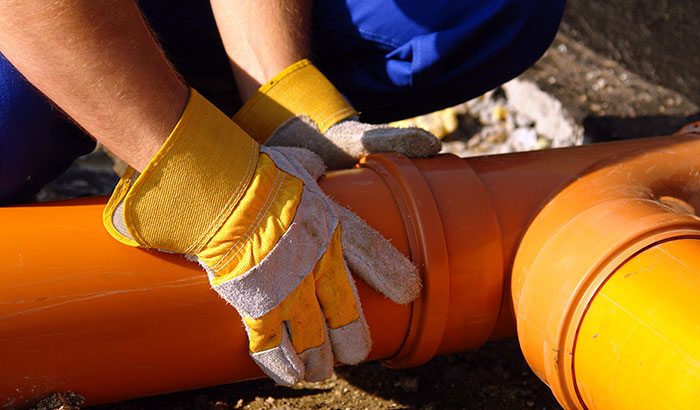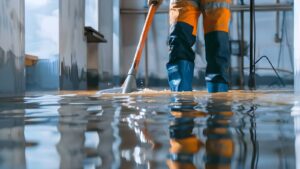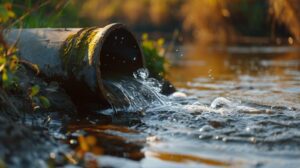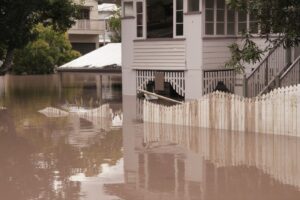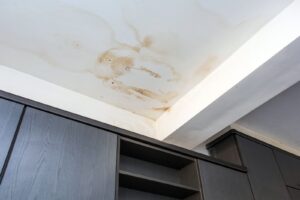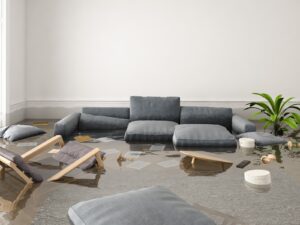Sewage damage can be one of the most devastating and unpleasant types of damage a homeowner can experience. This type of damage can be caused by various factors, including heavy rainfall, a clogged or broken sewage pipe, and sewage backup. When left unchecked, sewage damage can result in serious health hazards and can even cause long-term structural damage to a home.
For these reasons, it’s essential for homeowners to understand whether or not their insurance policies cover sewage damage. Having the right insurance coverage can provide a sense of security and peace of mind, knowing that if the unexpected occurs, you can recover from the damages. On the other hand, inadequate coverage can result in significant out-of-pocket expenses and financial strain, especially in the aftermath of a natural disaster or a sudden and unexpected sewage backup.
It’s important to note that sewage damage can be costly to repair, and the longer it goes unaddressed, the more damage it can cause. In addition to the potential structural damage and health hazards, sewage damage can also lead to the growth of mold and mildew, which can further exacerbate the damage and pose additional health risks.
As such, it’s crucial for homeowners to understand their insurance policies and know whether or not they are covered for sewage damage. In the following sections, we’ll take a closer look at the different types of insurance policies that may provide coverage for sewage damage and what factors can impact that coverage.
Types of Insurance Policies that May Cover Sewage Damage
Whether or not your insurance policy covers sewage damage depends on the type of coverage you have and how the sewage damage occurred. Here are some policies that may cover sewage damage:
- Homeowners Insurance: Homeowners insurance typically covers a variety of damages to your home and personal property, which can sometimes include damage from sewage line issues if you have a sewer line endorsement. However, it’s important to understand that not all policies are created equal, and coverage for sewage damage may vary depending on the specific policy you have.
Most standard homeowners insurance policies cover damage caused by perils, such as fire, vandalism, explosions, etc. If your sewer line was damaged due to a peril, it could be covered. However, some policies may exclude coverage for sewage pipe damage that was a result of poor maintenance or construction errors. Other damages to sewer pipes resulting from things like tree root overgrowth or pests are also usually not covered. It’s important to review your policy carefully and understand what is and isn’t covered.
It’s also important to note that there may be certain exclusions or limitations to coverage for sewage damage. For example, some policies may not cover damages caused by a sewer line break on your property, while others may only cover the cost of repairing the line itself and not the resulting damages. Additionally, some policies may have specific coverage limits for sewage damage, which may not be enough to cover the total cost of the repairs.
- Flood Insurance: Flood insurance typically covers any damages associated with flooding in the area. If you experience damage from a sewer backup, and that sewer backup was caused by the flooding, those damages are typically covered.
- Sewer Backup Coverage: You can typically get sewage backup endorsements that help cover any damages caused by sewage pipe backups, but these won’t cover any damages to the sewer pipe.
If you have questions about what your policy covers, make sure to call your insurance agent to talk about everything that your policy covers.
Factors that Can Affect Coverage for Sewage Damage
When it comes to insurance coverage for sewage damage, several factors can affect whether or not damages will be covered. Some of these factors include the cause of the sewage backup, the type of insurance policy you have, and any specific exclusions or limitations in your policy.
One of the most critical factors affecting coverage for sewage damage is the cause of the backup. Some insurance policies may only provide coverage for damages caused by a sewage backup that is the direct result of a covered peril, such as heavy rainfall or flooding.
If the backup is caused by a clogged or damaged sewer line on your property, you may need to have additional coverage, such as sewer backup coverage, to ensure that damages are covered.
The type of insurance policy you have can also affect coverage for sewage damage. Homeowner’s insurance policies may provide some coverage for damages caused by a sewage backup, but the coverage limits and deductibles may vary. Sewer backup coverage can provide additional protection and may be necessary to ensure that damages are fully covered.
As we mentioned above, it’s extremely important to review your insurance policy carefully to understand any specific exclusions or limitations that may affect coverage for sewage damage. For example, some policies may have exclusions for damages caused by a broken or damaged sewer line on your property or may only provide coverage for damages to specific property types.
The Sewage Clean-Up Process
Dealing with sewage damage can be a stressful and unpleasant experience for any homeowner. However, taking prompt and proper action can help minimize the damage and ensure your home is properly cleaned and sanitized. While it may be tempting to try cleaning up the mess yourself, hiring a professional experienced in sewage clean-up is your best choice to ensure your property is adequately cleaned and sanitized.
Before having a restoration company clean your home, make sure that you properly document any damages for insurance purposes. This will help the insurance process go smoothly and help ensure that you get the claims you’re entitled to.
The first step in the sewage clean-up process is ensuring the area is safe to enter. Sewage water contains harmful bacteria and other contaminants that can pose a risk to your health, so it’s important to wear protective gear such as gloves, goggles, and a respirator when entering the affected area.
Once the area is safe to enter, the next step is to remove any standing sewage water and debris from the area. This may involve the use of pumps and wet vacuums to remove the water and any solid waste materials. It’s important to dispose of any contaminated materials properly in accordance with local regulations.
After the standing sewage water and debris have been removed, the area must be thoroughly cleaned and disinfected to ensure that any remaining bacteria and contaminants are eliminated. This may involve the use of specialized cleaning agents and equipment to sanitize the area, including disinfectants, air scrubbers, and dehumidifiers.
Finally, any damaged materials, such as flooring or drywall, may need to be removed and replaced to ensure that the area is properly restored.
Finding the Right Restoration Company
Finding the right restoration company is an integral part of the sewage clean-up process. Look for a company that specializes in sewage damage restoration and has experience dealing with similar situations. Check their credentials, such as licensing and insurance, and read reviews from previous customers to ensure they have a good reputation.
It’s also important to work with a company that is available 24/7 and can respond quickly to your emergency. By doing your research and finding a reputable restoration company, you can ensure that your home is properly cleaned and restored after sewage damage.
Need Sewage Damage Restoration? Let Total Flood and Fire Restoration Help
In the unfortunate event of sewage damage in your home, it’s important to act quickly and contact a professional restoration company. Total Flood and Fire Restoration has the experience and expertise needed to properly clean and restore your home after sewage damage.
Our team is available 24/7 to respond to your emergency and get your home back to its pre-damage condition. Don’t hesitate to call us for fast and reliable sewage damage restoration services; call us today at 385-503-2572 or use our online form and let’s get your home back to how it should be.

